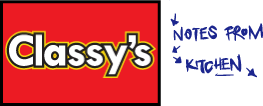I got into the Wave preview, and first things first: This really is a beta. The bugs. It is full of them. It is a dangerous move, lots of people aren't very good at looking at unfinished things, but I personally appreciate the opportunity.
Second thing: You can't really evaluate something that involves communication before you're actually trying it out for communication that you really want to be doing. Trying out Wave without a real need or purpose - because I can't invite the people I usually need to talk to - makes me question any and all user testing of software that isn't done with real paying customers.
That being said, even on the features, it seems the experience is a rewrite or two from being generally useful. Which is not a problem. GMail, famously, was redone 6 times for experience. Wave still feels like a lot of the interface has not been sandpapered down to proper size. I'm even unsure about the basic interface metaphor.
After seeing the original Wave demo, and reading the whitepapers, I wrote about how the project hit all the right marks in terms of openness and technology, and I still think the underlying tech - choice of Problem, Platform and Policy - is incredibly right. It's just that its right for a lot of different experiences and the one we're looking at now isn't polished yet, and doesn't really show off all the 3Ps can handle.
So what could it do and what does it do and what does and does not work?
What the Wave technology does underneath the experience is real time, collaborative, federated, versioned, editing of XML
- Real time: Changes are transmitted live as they happen
- Collaborative: Many users can edit the same resources
- Federated: You can set up your own server and collaborate with people on Google's servers - no silos
- Versioned: There's full edit history
- XML: It's structured, so you can do database-y object-y stuff
That is an almost complete list of things you can ask for in shared action on the internet.
But of course it is not an experience.
The Wave UI seems to have stayed pretty close to the tech-description above. The experience is "structured, live, collaborative writing". Examples of what it isn't:
- "Lifted" email (like GMail was).
- "Lifted" chat (not sure anybody does that).
- A way for me to communicate with non-Wave users
What I was hoping was maybe that it felt like the ideal final resting place for my GMail and my GTalk archives, as well as a new way to collaborate, but I'm not sure these experiences can all fit into the same UI. For starters, the ability to edit is irrelevant, if not downright odd, for chat - our brains can't do it, so it seems odd that the interface can.
However, we could just have a couple of different experiences - much like I chat in Adium, but love the archive in GMail. That integration is incomplete - in that I can't restart the chart later. Once I'm in GMail I have moved on. There's no Adium friendly API into the chat archives. With Wave I could start a conversation with reference in a previous conversation - which could be a great interface. Also, the ability to fork conversations, could be made very nice as an experience.
When I started writing, I wanted to include my list of observations of odd things in Wave (desktop metaphor seems wrong for this, wave/contact/tool organization takes up too much screen compared to content, muting vs archiving hard to understand, 99 changes in a wave impossible to understand, bots vs gadgets what does what? why is there a 'display' and an 'edit' mode?) as well as what seems like bugs - but I think I'll do that separately later in a better format.
